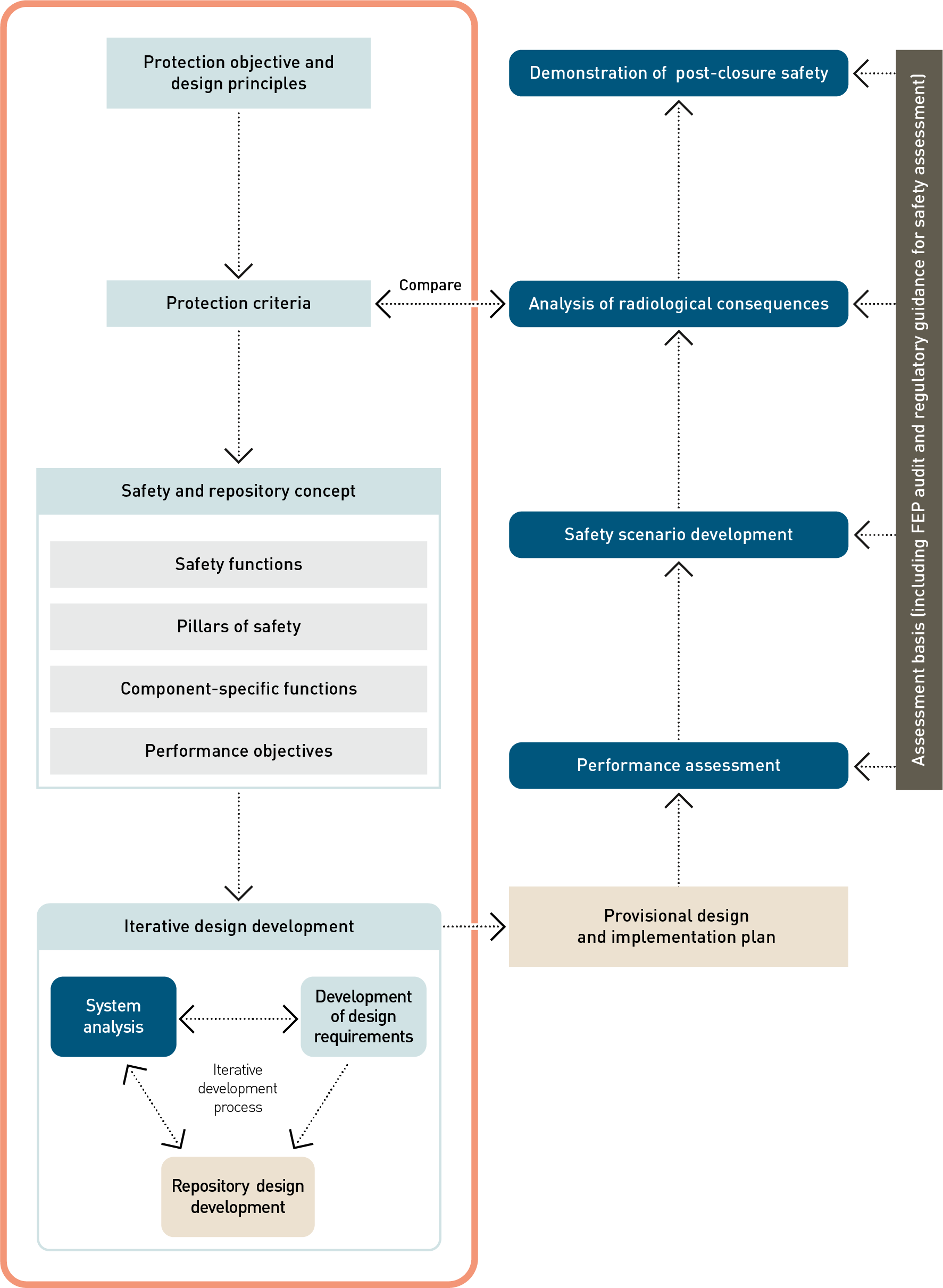The workflow for the development of a safety and repository concept and a repository design, which then leads to a provisional design and implementation plan, is illustrated on the left-hand side of Fig. 3‑1 and described briefly in the following sections. The figure also shows, on the right-hand side, the workflow for safety assessment as described in later chapters of this report.
The starting point is the overarching protection objective, as well as design principles and protection criteria prescribed by Swiss regulations and national and international principles. These underlie a high-level safety and repository concept for deep geological disposal, which in turn provides a basis for an iterative design development.
In Nagra’s terminology, the safety concept explains how, through the safety barriers and safety functions they provide, the repository performs its overarching safety functions and ensures the protection of humans and the environment. The repository concept describes the individual safety barriers and their properties, including interactions. The safety concept and repository concept are thus closely intertwined and are referred to collectively as the safety and repository concept. Nagra’s current safety and repository concept has been iteratively developed and is now considered well understood. The current concept, though mature, is still provisional and offers flexibility for future adaptions.
By contrast, the more detailed design and implementation plan is provisional and specifically developed for the purposes of the general licence application. As also shown in Fig. 3‑1, it represents the current outcome of an ongoing iterative process entailing:
-
the identification and development of a set of design requirements to be met, including, but not limited to, those related to post-closure safety,
-
the design development itself, whereby solutions are proposed and refined to meet these design requirements in a manner that is compatible with site-specific conditions, feasible to implement with proven technology, and that avoids unnecessary complexity and excessive cost, and
-
analyses of the system as a whole and its various subsystems to test whether the requirements are met and to guide the further modification of the design.
In summary: the protection objective, protection criteria, safety functions, component-specific functions, performance objectives and design requirements together constitute a hierarchy of safety requirements that guide design development.

Fig. 3‑1:Workflow for the post-closure safety case, highlighting, in the orange box, the process for developing the current safety and repository concept and a repository design, which then leads to a provisional design and implementation plan

